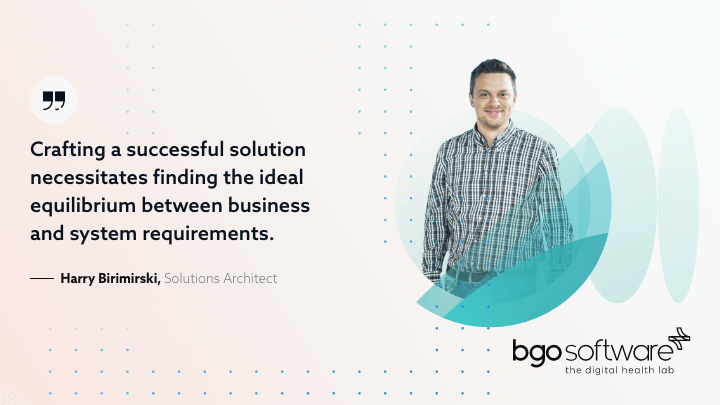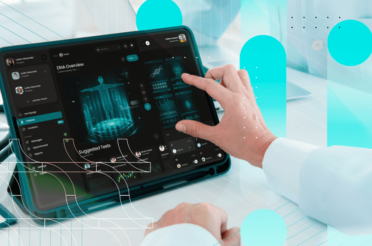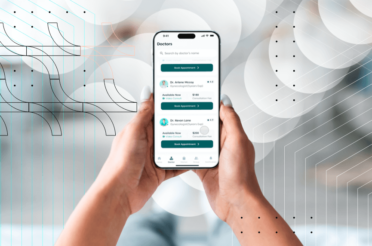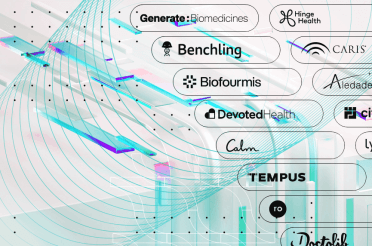Creating GMP (Good Manufacturing Practice) validated systems stands as an achievement for any software development team. However, the sector that we all work in requires us to make certain sacrifices and decisions that are often not always easy.
Developers must also consider various factors when tasked with building a tech stack. In the decision-making process, it’s crucial for you as a developer to comprehend the connection between business decisions and technical choices – this understanding should never be overlooked.
In the following interview, our GMP Validated Systems champion Harry Birimirski reveals his secrets to dealing with complex scenarios in his many years of experience. He makes understanding the decision-making process a lot easier as he explains how to find the best tech solution for your GMP-validated system regardless of the complexities of your company or product.
In order to cover all the problems that you are likely to encounter as a developer, Harry Birimirski the role of technology stacks, the nuances of solution architecture, and the challenges faced by developers in this domain.
Decoding the importance of tech stack selection in business
Typically, the selection of technology relies on the ‘enterprise architecture solutions’ established within the company where the software is being developed.
There are a couple of scenarios that can play out during the onboarding process:
- The absence of definitions or requirements from the customer could be due to their team’s lack of experience and knowledge in this specific software or IT in general.
- Even with a manufacturing and IT team in place, the company’s current software structure is likely to be unique and presents challenges in integrating with new GMP-validated software.
When we analyze this information at the enterprise level, we grasp the importance of solution architecture, which needs to correspond to the specific solution demanded by the enterprise. The decision should be well-informed, taking into consideration not only this technological solution but also the additional supporting GMP-validated software solutions the enterprise intends to invest in.
For example:
- What software is being considered for member authorization within the enterprise?
- Is the plan for the software to be solely mobile-based, or are there plans to incorporate extra features?
- How is the software safeguarded against potential security threats?
- Is this solution only going to be available for people working within the enterprise or would it require access and adaptation for all Internet users?
The responses to these questions and the consequences of the selected software are influenced by the resources at the customer’s disposal for investing in a new technology solution.
At BGO, our services are tailored by expert professionals who understand diverse customer needs and encompass the entire tech stack. In the meantime, our CTO-as-a-service approach ensures seamless client alignment and swift, customized solutions.
BGO’s client process: a strategic insight
“The foundation of creating the flawless solution for our clients lies in the discovery call.”
Harry Birimirski
Subsequently, we proceed to the second phase, which entails a thorough analysis of the situation. The final stage is the roadmap phase, where we actively implement and formulate a plan to achieve our customer’s goals.
Only after comprehensively understanding the client’s challenge, we conduct a gap analysis to spot any potential gaps. As a result, we often have to reexamine the initially proposed roadmap. After the roadmap has been redefined, we proceed to the implementation stage.
Before product release, the product owner evaluates all deliverables to determine if the product is ready to go live. Following the product release, our attention shifts to support and maintenance, marking the final step in the implementation process and the completion of a product tailored to our client’s needs.
Tech stack developers’ toughest hurdles
As with everything that has to do with software solutions – the implementation will always be the most difficult step even for companies that do have an IT support team.
Within this framework, the most challenging scenario occurs when a company already has a set standard for its software and aims for the new one to seamlessly integrate and complement the existing software as closely as possible.
This results in a disconnect between their knowledge and our specialization in supporting and building software products. Nevertheless, when everyone is on the same page regarding the goals, the process becomes significantly more efficient.
An additional complication within the process is the presence of NFRs (Non-Functional Requirements), which are highly elusive and challenging to identify during the discovery phase of the onboarding process. This happens because everyone is exclusively concentrated on the business side of the problem.
NFRs emerge as a hurdle between the solution we aim to deliver and what is realistically attainable, hindering the validation of the product at the process’s conclusion. We need to consider the current system requirements outlined by the regulators within the company we’re supporting.
“Finally, it’s essential to evaluate the technical capabilities of the solution to be implemented.”
Unfortunately, these questions don’t play a significant role in business considerations and are often ignored and omitted during the initial evaluation phase.
Two different conclusions emerge when evaluating the technical side of the onboarding process:
- If the customer doesn’t consider our recommendations, we can provide them with a prearranged system, but validating it might take a considerable amount of time.
- A more standard scenario is when we already have a validated system, but it doesn’t entirely match the company’s requirements.
The essential next step is selecting the execution and implementation team to ensure the proper validation of the GMP project. This phase, unlike the discovery phase, involves a much larger workforce. Therefore, selecting the right individuals in line with the agreed terms and objectives is incredibly essential.
Strategic understanding: manufacturing in GMP projects
Understanding the intricacies of the manufacturing process can be a substantial challenge, especially given the enormous size of specific companies and the projects they embark upon. Due to this very reason, crafting a roadmap is crucial to understanding the systematic development of the new GMP-validated system, one step at a time.
This aids the large team in identifying gaps within their processes, helping everyone catch up on the procedures and comprehend each step. Our established system always guarantees speedy implementation.
When dealing with a new client, having a fixed price and a set time frame holds higher priority for them. At the same time, a long-term collaboration with a client nurtures a cooperative system, resulting in a marked increase in productivity.
This is because, at BGO, we grasp the importance of engaging with individuals and collaborating efficiently throughout the entire process.
Developer’s roadmap to GMP tech stacks
As a developer, relying exclusively on your abilities and a systematic process to address the challenges that may arise during the building process won’t yield highly successful or efficient writing results. This highlights the significance of undergoing comprehensive training and acquiring certifications to navigate challenges, particularly for junior developers.
Among these essential training elements and skills are coding standards, optimal practices for deliverables, and the ability to comprehend and process project-related documents effectively.
Each developer must validate their acquisition of these skills and understanding. This, in turn, will dramatically improve the working standards and speed up the software development process.
Conclusion
At BGO, Harry and his colleagues created their own standards to follow and a system that helps them accelerate their decision-making process. Even though they all started as just developers they have been able to solve complex problems using this newly-gained experience.
It’s common for these companies to provide multiple software solutions to their customers, and they typically utilize a tool referred to as the ‘technology radar’. Companies frequently refer to the radar when determining which technology solution to invest in and incorporate into their operations.
Throughout this article, we’ve delved into this exact nuanced process of crafting software solutions tailored to meet not only the technological but also the business requirements of a business.
The distinction that Harry makes in the interview is clear – developers must transcend the conventional boundaries of code and algorithms. By gaining a deep understanding of your customer’s business needs at the core of tech stack development you learn how to provide solutions more quickly.

Whether you’re a startup, a Fortune 100 company or a government organisation, our team can deliver a solution that works for you.
BGO Software
This comprehensive strategy guarantees that the software operates seamlessly while perfectly aligning with the client’s overall business objectives.By embracing this perspective, you as a developer will not only meet but exceed your client’s expectations. The path to success lies in the combination of technical expertise with a keen understanding of business dynamics.
















